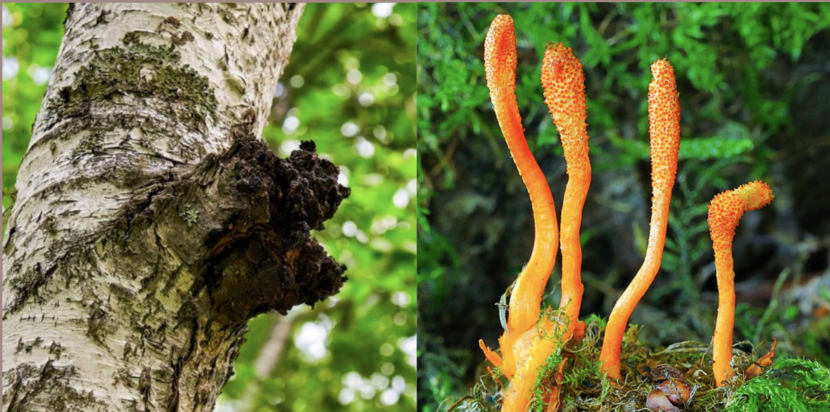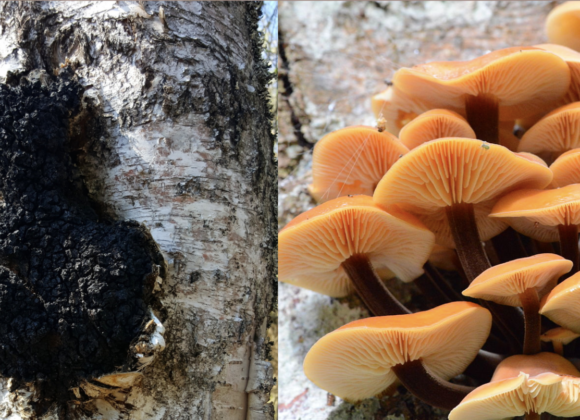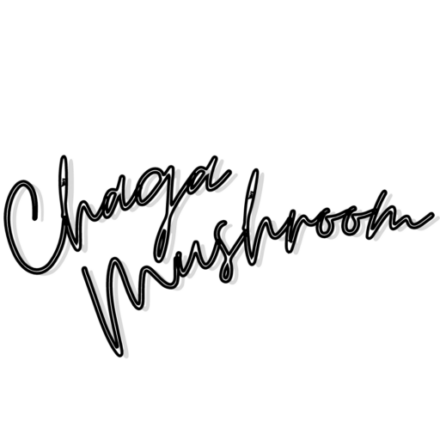Chaga and Cordyceps are both known functional mushrooms, or perhaps you’ve heard them being called medicinal mushrooms. They are different by nature, like in taste and texture, how we can source them, and health-promoting qualities, yet both possess strong health benefits for the human body. This article will compare the Chaga vs. Cordyceps pair.
What are Cordyceps?
Cordyceps is a part of the Ascomycetes fungus family, which includes around 600 species (including truffles, morels, and ergot fungus – the source of the most potent hallucinogen in the world). The fungi are valued primarily for their incredible ability to increase energy and reduce fatigue. Cordyceps are not new and have been the centerpiece of traditional Chinese medicine for more than 1300 years. Cordyceps’ stoma and fruiting body grow out of an insect, most commonly a caterpillar, from where they get their other name, “caterpillar mushroom.”

Although some cordyceps strains grow in other locations, the originally celebrated strain Cordyceps Sinensis only grows on the Himalayan Plateau. Meaning that the harvesting of the fungus can be very challenging and expensive. Some experts estimate that the harvesting of Cordyceps brings in 90 percent of the cash income in the areas of Tibet where they’re found. The Himalayan harvester hopes to see around ten tiny specimens daily, which explains why wild Cordyceps can cost as much as $20,000 a pound!
Thankfully, another species (Cordyceps Militaris) can actually be cultivated on plant-based materials. This is what is used in mushroom supplements today.
Cordyceps are most loved for their energizing effects, thanks to the beta-glucans found in them. The beta-glucans will deliver oxygen to the body on a cellular level, which not only decreases the occurrence of disease but also boosts stamina and energy. The fungus also increases adenosine triphosphate (ATP) levels in the body. ATP is the body’s main energy source and is therefore required for all cellular processes.
The fungus’s health benefits include anti-inflammatory properties (helps with blood flow, heart health, and lowering cholesterol). Its beta-glucans, with another chemical compound called cordycepin acid, are known to shrink tumors and stimulate lymphocyte production.
What is Chaga Mushroom?
Chaga is a polypore fungus that grows mainly on birch trees in cold climates. It grows on living trees, but it is parasitic. This means that the fungal mycelium enters the stem of a mature tree through a crack or a wound in the bark and then starts to absorb and synthesize healthy compounds that we, humans, will consume.

These mushrooms grow best on the outside of yellow and white birch trees. Chaga mushrooms are abundant in the northern hemisphere, with higher forest altitudes, like the northern deciduous forests. Chaga thrives in cold, damp conditions and has an excellent tolerance for surviving brutal winters.
Natural healers and traditional medicine practitioners have been aware of this mushroom for centuries. Recent scientific studies demonstrate the effectiveness of Chaga in treating several diseases and afflictions. The Memorial Sloan Kettering Cancer Center lists the purported uses of Chaga as treating and preventing cancer, stimulating the immune system, reducing inflammation, and protecting the liver.
As mentioned, these medicinal mushrooms are not edible in the standard method. Instead, their properties need to be extracted. The extraction requires prolonged simmering or soaking. This process makes the beneficial components bioavailable to the human body, which means the body can absorb the nutrients.
Related: Chaga Mushroom Extraction Methods
Like Cordyceps, Chaga has incredible immunomodulating powers. Chaga’s polysaccharides, specifically beta-glucans, can increase the production of lymphocytes (a type of white blood cell that regulate the immune response to infectious microorganisms and other foreign substances). Chaga is also known as one of nature’s richest sources of antioxidants. Antioxidants protect your body from free radicals, which otherwise would lead to cell degeneration (chronic fatigue, chronic pain, chronic illness, and cancer).
Chaga is also abundant in betulin, which has antitumor and anticancer properties. Betulin produces a derivative called betulinic acid, which is antibacterial, antiviral, anti-inflammatory, and antioxidant, with adaptogenic properties. This allows Chaga to balance and restore your entire system, which can lead you to function at your highest potential!
Related: 5 Benefits of Chaga for Skin Health
Chaga vs. Cordyceps, which one to consume?
As mentioned, Chaga and Cordyceps are both functional foods or medicinal mushrooms but provide completely different health benefits. Cordyceps are most loved for their energizing effects, thanks to the beta-glucans found in them. The beta-glucans will deliver oxygen to the body on a cellular level, which not only decreases the occurrence of disease but also boosts stamina and energy.
If you’re looking for healing, then Chaga’s anti-inflammation, immune-boosting, and digestion-aiming detoxifying properties are more up your alley.
Before picking one over another, figure out which processes in your body you’d like to support. If preferred, the mushrooms can also be taken together, but ensure each is extracted using the correct methods.
Chaga vs. Cordyceps accessibility
When it comes to Chaga, it’s important to remember that Chaga gets most of its nutritional value from its host – the Birch tree. The medicinal value of Chaga that has been harvested from trees other than birch may be entirely different. You should especially pay attention to your Chaga being wild harvested, as we’ve heard of Chaga grown in laboratories.
This has become a bigger issue over the last few years as Chaga has gained more mainstream popularity. Business-motivated corporates are trying to cut corners and grow Chaga faster and more efficiently indoors. This means your bought Chaga possesses no health benefits but is most likely marketed as a health product.
Whilst Cordyceps is a different story, as mentioned, the originally celebrated strain Cordyceps Sinensis only grows on the Himalayan Plateau, which makes the fungus hard to obtain, and that also reflects in the price. Luckily there are another almost as powerful species called Cordyceps Militaris that can even be cultivated on plant-based materials and at home using a grow kit.










